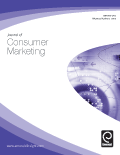In 2007 I was recruited to pen a chapter for The Silver Market Phenomenon Edited By Florian Kohlbacher and Cornelius Herstatt:
04 September 2008
Published: The Silver Market Phenomenon
 28 June 2010
28 June 2010
The Silver Market Phenomenon 2010: Update
… The current shift in demographics – aging and shrinking populations – in many countries around the world presents a major challenge to companies and societies alike. One particularly essential implication is the emergence and constant growth of the so-called “graying market” or “silver market”…
Last year I was again honored. Professor Kohlbacher asked me to fashion an Afterword for his newest co-written tome:
 Advertising in the Aging Society
Advertising in the Aging Society
Understanding Representations, Practitioners, and Consumers in Japan
By Michael Prieler and Florian Kohlbacher
Population aging is a powerful megatrend affecting many countries around the world. This demographic shift has vast effects on societies, economies and businesses, and thus also for the advertising industry. Advertising in the Aging Society presents an insight into advertising practitioners and consumers in Japan.
Download The Flyer (PDF)
I’m serious. Download it.
The Authors:
 Michael Prieler is Associate Professor of Communication in the School of Communication at Hallym University, South Korea. Before this, he worked and studied for several years in Japan. His research focuses on media representations of gender, race/ethnicity, and older
Michael Prieler is Associate Professor of Communication in the School of Communication at Hallym University, South Korea. Before this, he worked and studied for several years in Japan. His research focuses on media representations of gender, race/ethnicity, and older
people,and has been published in numerous books and international journals.
 Florian Kohlbacher is Associate Professor of Marketing and Innovation in the International
Florian Kohlbacher is Associate Professor of Marketing and Innovation in the International
Business School Suzhou (IBSS) at Xi'an Jiaotong
- Liverpool University (XJTLU) in Suzhou, China, and the Founding Director of the XJTLU Research Institute on Ageing and Society (RIAS). He is also an adjunct fellow at the Institute of Contemporary Asian Studies (ICAS) at Temple University, Japan Campus.
 “Advertising in the Aging Society presents a refreshing and rare combination of theory-driven, data-rich research complete with clear implications for advertising practice. After analysis of nearly 3,000 television advertisements, 185 advertising practitioners’ survey responses, and 1,834 audience surveys, the authors provide insightful advice regarding the effects, effectiveness, and ethics of portraying silver citizens in advertising.
“Advertising in the Aging Society presents a refreshing and rare combination of theory-driven, data-rich research complete with clear implications for advertising practice. After analysis of nearly 3,000 television advertisements, 185 advertising practitioners’ survey responses, and 1,834 audience surveys, the authors provide insightful advice regarding the effects, effectiveness, and ethics of portraying silver citizens in advertising.
- Michelle R. Nelson, Associate Professor of Advertising University of Illinois at Urbana-Champaign
 For a limited time, Palgrave Macmillan is offering a sample chapter for download.
For a limited time, Palgrave Macmillan is offering a sample chapter for download.
A snippet of the Afterword:
… During my international consulting in Europe and elsewhere, I always begin my presentations with a quote from American Political Scientist Seymour Lipset (1922-2006) culled from his book American Exceptionalism: “Those who know only one country, know no country.” Then I say to the participants, “Whatever I tell you today will be specific to the 50+ Market in the United States … Much of what I’ll say will not be relevant to you. What I hope will happen: As you watch and listen, every so often certain concepts, ideas, and practices will ring true – and you’ll know that what I’ve just said is more than likely a universal truth about advertising to this demographic. You will then be able to fashion marketing campaigns with a finely-tuned mix of country-specific and universal values.”
From my experiences hopping from country to country, I was surprised to be learning as much about my country as I was learning about other countries…
Back to The Flyer you should’ve downloaded:


"This is a very exciting book. Japanese advertising practitioners should listen carefully to Prieler and Kohlbacher's messages. They have implications for advertising around the world as population's aging is a global megatrend."
- Setsuo Sakamoto, Executive Producer, Institute of Elder Knowledge and New Adult Culture, HAKUHODO Inc.
Congratulations to Michael Prieler and Florian Kohlbacher. Advertising in the Aging Society is a major accomplishment.
On Amazon USA / On Amazon UK









 28 June 2010
28 June 2010






 … That silly retronym “traditional advertising” will remain the premiere force for introducing people to a product or service, along with sustaining its shelf life. Television, print, radio, and billboard ads will continue to have the visceral power they’ve always had – if only for their sheer size, simplicity, and cutting-edge audio/visual qualities. Advertising on smartphones will be considered an annoyance, invasive, and rather dinky…
… That silly retronym “traditional advertising” will remain the premiere force for introducing people to a product or service, along with sustaining its shelf life. Television, print, radio, and billboard ads will continue to have the visceral power they’ve always had – if only for their sheer size, simplicity, and cutting-edge audio/visual qualities. Advertising on smartphones will be considered an annoyance, invasive, and rather dinky… … People will power up desktops/laptops for work and interactive pursuits, then grab their tablets for passive pleasure.
… People will power up desktops/laptops for work and interactive pursuits, then grab their tablets for passive pleasure.

 06 January 2016
06 January 2016 19 April 2016
19 April 2016
 …I like it when someone else writes a post for me – and/or I’ve written the post before (in this case, loads of times) so I don’t have to start from scratch. Copy ‘n Paste is fast becoming my mantra...
…I like it when someone else writes a post for me – and/or I’ve written the post before (in this case, loads of times) so I don’t have to start from scratch. Copy ‘n Paste is fast becoming my mantra... 14 October 2016
14 October 2016 07 October 2016
07 October 2016 26 August 2016
26 August 2016![[image%255B5%255D.png]](https://blogger.googleusercontent.com/img/b/R29vZ2xl/AVvXsEh-p-plGXgDwR06TBxGb4CbB9CxBcqCCI2aVz7evMI8iGoTh8OMqxLaGGnFCimGlQUznSPD4F0wdKxkxLfeacGyUE8pDtbs4Yz42F7pI5nNEDTXQDnWaqI7SNA2diVw_4UHa73eFg/s1600/image%25255B5%25255D.png) 03 October 2016
03 October 2016 …The realization that something you thought to be “real” is actually an advertisement is an increasingly common, if unsettling, sensation. Mara Einstein calls it “content confusion,” and if her book, “Black Ops Advertising,” is right, we’re in for even more such trickery…
…The realization that something you thought to be “real” is actually an advertisement is an increasingly common, if unsettling, sensation. Mara Einstein calls it “content confusion,” and if her book, “Black Ops Advertising,” is right, we’re in for even more such trickery…

 Brand loyalty almost always fades, and hasn’t made sense for decades.
Brand loyalty almost always fades, and hasn’t made sense for decades.  Hire Baby Boomer Creatives
Hire Baby Boomer Creatives You nailed it Chuck! My reaction (albeit with an agency skew) is that these spots are targeting BOOMERS, but written by 20-somethings? … Young creatives (are there really any other kind?) can't write to BOOMERS…so they write to please themselves. As a BOOMER many of us see right through this common occurrence.
You nailed it Chuck! My reaction (albeit with an agency skew) is that these spots are targeting BOOMERS, but written by 20-somethings? … Young creatives (are there really any other kind?) can't write to BOOMERS…so they write to please themselves. As a BOOMER many of us see right through this common occurrence. 03 October 2005
03 October 2005 What I didn’t foresee
What I didn’t foresee

 The Ugly, The Bad and The Good
The Ugly, The Bad and The Good